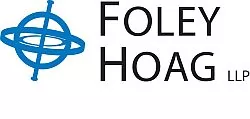- within International Law topic(s)
- with Senior Company Executives, HR and Finance and Tax Executives
- in United States
- with readers working within the Technology, Oil & Gas and Law Firm industries
To date, President Trump has signed 157 Executive Orders since
returning to the presidency in January.1 A number impose
tariffs, based on a range of legal bases, primarily invoking powers
granted under the International Emergency Economic Powers Act
(IEEPA). This statute allows the President to address "unusual
and extraordinary threats" to the national security, foreign
policy, or economy of the United States. For instance, on April 2,
2025, the Trump administration announced the imposition of a 10%
IEEPA tariff on imports from all countries worldwide, effective
April 5, 2025, and further country-specific reciprocal tariffs,
based on trade imbalances.2
In addition, the administration has varied the measures imposed
following investigations, under Section 232 of the Trade Expansion
Act of 1962 (Section 232), completed during the first Trump
administration. Section 232 addresses issues of "national
security" arising from importation of specified products.
Exemptions from earlier tariffs on imports of steel, aluminum, and
derivative products have been revoked and new tariffs on
automobiles and parts have been imposed. In addition, the
administration has initiated a number of Section 232 investigations that
could directly impact defense and aerospace supply chains,
including:
- On 1 April 2025, the Secretary of Commerce initiated a Section 232 investigation to determine the effects on national security of imports of semiconductors, semiconductor manufacturing equipment, and their derivative products;
- On 15 April 2025, the President ordered the Secretary of Commerce to initiate a Section 232 investigation into imports of processed critical minerals and their derivative products, in view of the need to ensure "a resilient manufacturing and defense industrial base, and secure domestic supply chains;" and
- On May 1, 2025, the Secretary of Commerce initiated a further Section 232 investigation to determine the effects on the national security of imports of commercial aircraft and jet engines, and parts for commercial aircraft and jet engines.
Reports from these investigations should be sent to the
President within a statutory deadline of 270 days from their
initiation, though the administration has signaled that they will
be completed more quickly.
The globally interconnected supply chains upon which modern
manufacturing is built are already being impacted by these tariff
changes, and there is a significant risk of substantially greater
impacts to come, as the investigations described above (and
potentially more) turn in their reports. There are, of course, also
the reactions of other nations to these tariffs to consider.
In this volatile trade environment, businesses must adopt a
proactive and adaptable approach to managing their supply chains
and strategic planning. The unpredictable nature of the tariff
environment necessitates a multi-faceted strategy to mitigate risks
and capitalize on potential opportunities:
- Reviewing and strengthening contractual frameworks and dispute resolution mechanisms. A thorough review of relevant contractual provisions, such as pricing, hardship and force majeure clauses, can be helpful. Reviewing existing arrangements will help address issues with tariffs that have already emerged, and help identify where risks may arise in the coming months. Special care should be directed to dispute resolution clauses to ensure, for instance, that decision-makers possess the necessary expertise, and that resolution timelines are suitable for the potentially immediate and severe impact of new tariffs.
- Refreshing knowledge on statutory and regulatory protections. In many, especially civil law jurisdictions, legal concepts such as hardship and force majeure will potentially be applicable on a statutory basis, regardless of the terms of the relevant contracts. There are also more specific protections that may be available in certain jurisdictions: for instance, with respect to sales to the US government governed by the Federal Acquisition Regulation (FAR) may allow recovery of tariffs under FAR 52.229-3 as an "after-imposed tax," or where the impact on the overall cost is sufficient.
- Proactive intelligence gathering and participation in relevant discourse. Companies should actively seek out information on likely tariff developments and maintain a broad global perspective. This includes subscribing to advanced tariff trackers for early warnings (Foley Hoag's Federal Actions Tracker is here), engaging with industry benchmarking groups for market insights and best practices, and actively participating in governmental consultations to influence policy responses. Indeed, consultations for the Section 232 investigations above are currently open.
- Strengthening supply chains. Examining supply
chains for resilience against unexpected trade policy developments
can be valuable. Specifically, it can help to:
- Explore the diversification of the geographical location of suppliers (imports) and customers (exports).
- Assess whether sourcing intermediate goods at different transformation levels (e.g. semi-processed vs. raw materials) could optimize tariff burdens.
- Establish local supplier and customer relationships in key markets (e.g. within the US or EU).
- Identify relationships that no longer work in the present, or likely, tariff environment that it would be helpful to bring to an end.
- Analyze fiscal impacts and optimize transfer pricing.
These proactive strategies for managing exposure to trade policy uncertainty are additional to more assertive reactive strategies that include challenging tariffs in domestic courts or seeking remedies under international treaties.
Footnotes
1 Foley Hoag maintains a "Federal Actions Tracker" that is regularly updated to track Executive Orders and related actions, including in respect of trade issues.
2 There have been subsequent developments with respect to tariffs announced on 2 April, 2025, including a time-limited pause to country-specific tariffs above 10% as well as court challenges.
The content of this article is intended to provide a general guide to the subject matter. Specialist advice should be sought about your specific circumstances.





